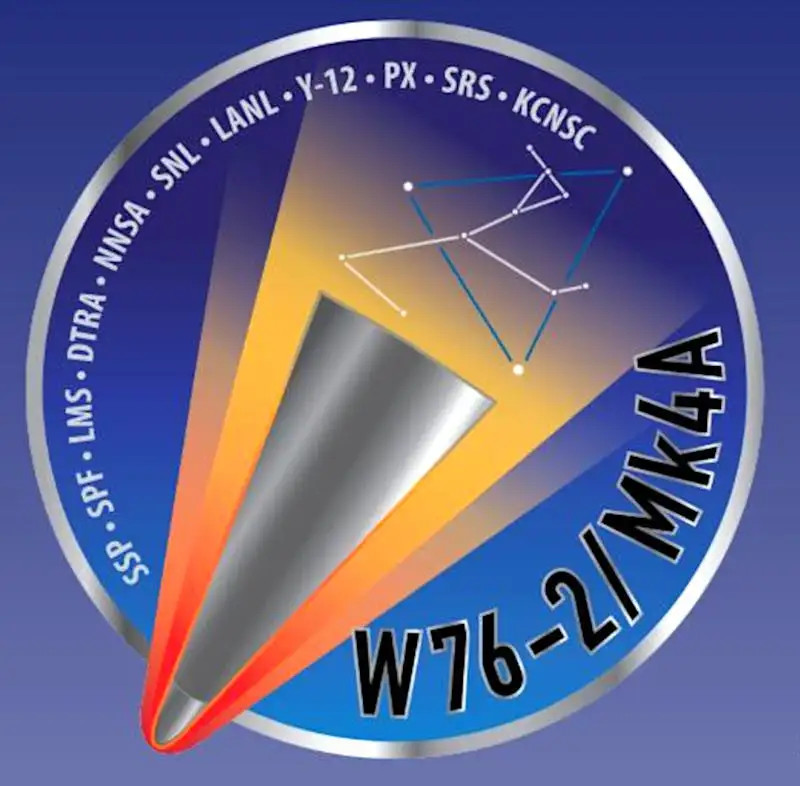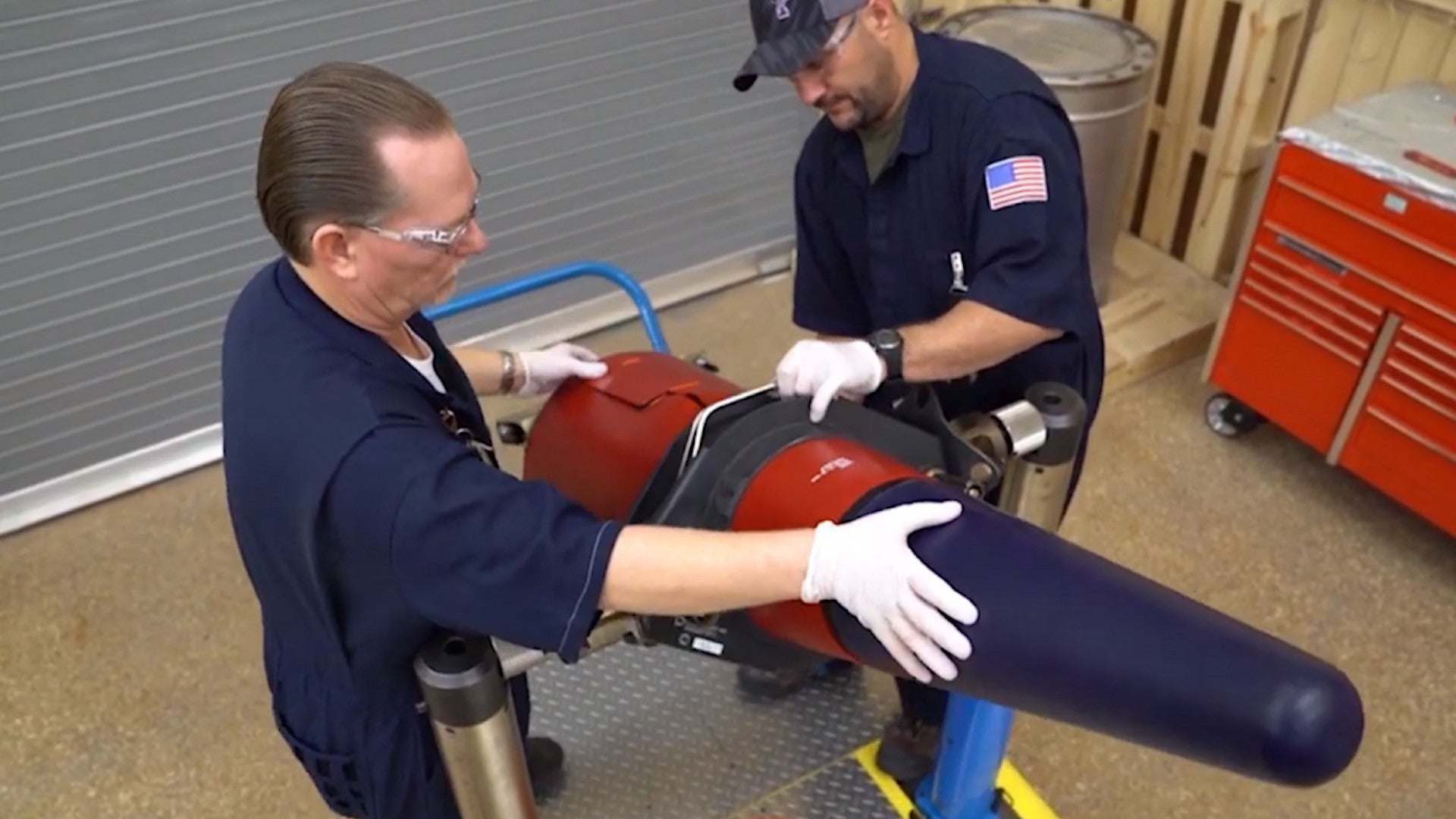A new report says that the Department of Energy’s National Nuclear Security Administration has finished the planned production run of controversial low-yield W76-2 nuclear warheads for the U.S. Navy’s Trident D5 submarine-launched ballistic missiles and delivered all of them to that service. This revelation comes just weeks before President-elect Joe Biden is set to take office. Biden has said that fielding this weapon, which some experts say worryingly increases the chances of the U.S. government using nuclear weapons in a crisis, is a “bad idea.”
The National Nuclear Security Administration (NNSA), which oversees the development and production of nuclear weapons and manages America’s nuclear deterrent stockpile, provided the new details about the W76-2 program in its annual Stockpile Stewardship and Management Plan for Congress. NNSA released the unclassified version of this report on Dec. 28, 2020.

“The W76-2 is the nation’s response to the low-yield ballistic missile requirement called for in the 2018 Nuclear Posture Review,” the NNSA report says. “In FY 2020, assembly of the W76-2 was completed, with the full quantity produced and delivered to the Navy.”
The 2020 Fiscal Year ended on Sept. 30. We don’t know how many W76-2s were completed in total or how many are deployed on Trident D5s loaded on the Navy’s Ohio class ballistic missile submarines, or SSBNs, at any one time. Reports had emerged in January that the USS Tennessee had become the first boat to head out on a deterrent patrol carrying Tridents armed with these warheads. NNSA had previously announced the completion of the first W76-2 at the Pantex Plant in Amarillo, Texas, in February 2019.
How exactly the W76-2 differs from previous W76 warheads is classified, but it is understood to be a derivative of the W76-1 design. NNSA crafted the W76-1 as part of a life-extension program for existing W76s and delivered the last of these overhauled warheads to the Navy in 2019. The latest Stockpile Stewardship and Management Plan confirms that some W76-1s were subsequently converted into W76-2s.

The W76-1 has an estimated yield of approximately 100 kilotons, while that of the W76-2 is believed to be around just five kilotons. If that latter estimate is accurate, the W76-2 would have only one-third of the yield of the Little Boy bomb that the U.S. dropped on the Japanese city of Hiroshima during World War II.
It’s also worth noting that the Navy’s Trident D5s can be armed with W88 warheads, which have a reported approximate yield of 475 kilotons, as well. Each one of these missiles is capable of carrying up to 14 warheads, as well, but successive arms control agreements with Russia mean that they typically only have five or six loaded inside at a time. Of course, the stated strategy behind the W76-2 means that it would defeat the purpose of those warheads if there were loaded together with W76-1s or W88s and it’s unlikely that more than one or two of them would be fitted to any one missile.
The maps below were created using NUKEMAP, an online tool created by nuclear weapons historian Alex Wellerstein, presently a professor at Stevens Institute of Technology in New Jersey. They show the approximate extent of various effects on the Washington, D.C. area from the detonation of, from right to left, a W88, a W76-1, and a W76-2, based on their estimated yields.

It is notable that NNSA was able to deliver the entire planned production run of W76-2s to the Navy within 17 months. Production and delivery of the W76-1 warheads took more than a decade to complete, though that effort did also involve a larger number of total warheads.
The speed with which the W76-2s were produced would also seem to bolster previous reports that have posited that this warhead is a version of the W76-1 with its second stage removed to dramatically lower its yield. That some W76-1s were directly converted into W76-2s would seem to add further weight to that existing analysis. The W76-1, as well as the original W76, are understood to be two-stage thermonuclear weapons wherein an initial atomic reaction triggers a second, more powerful one.
Beyond the W76-2’s design and capabilities, that the Navy now has the full quantity of these warheads in its inventory is significant by itself. President Donald Trump’s Administration initiated the development of this weapon following the completion of the last Nuclear Posture Review in 2018.
The ostensible reasoning behind its development was a need for added flexibility to respond to certain contingencies, especially a limited nuclear strike by a hostile adversary. This requirement was driven in no small part by concerns that the Russian government had adopted a so-called “escalate-to-deescalate” policy wherein it might use a small number of low-yield nuclear weapons to effectively force the end of a conflict on terms favorable to Moscow. At least in theory, the idea would be to shock an opponent or opponents, such as the United States and NATO, into seeking some sort of negotiated settlement rather than further escalating the situation.

Experts have questioned whether Russia actually has such a policy. Regardless, the Kremlin has stated in no uncertain terms that it would respond to a strike involving lower-yield warheads in the same way it would to any nuclear attack, with massive retaliation. This makes sense since it would impossible for Russian officials to know what kind of warheads an incoming Trident D5 might be carrying until they hit.
With all this in mind, critics have warned that the W76-2 could lower the U.S. government’s thresholds for the employment of nuclear weapons, in general. This, in turn, would increase the danger of a crisis escalation into a full-blown nuclear conflict, which could have apocalyptic implications for the entire globe.
The Trump Administration has denied the W76-2 increases the likelihood of a nuclear exchange, but this has only raised more questions about when the U.S. government would then be prepared to use it rather than higher-yield nuclear weapons.
President-elect Biden has himself been critical of the W76-2, calling them a “bad idea” and saying that their existence makes the U.S. government “more inclined to use them” in the past. In 2019, California Senator Kamala Harris, now Vice President-elect, was among those to call for a ban on the deployment of these low-yield nuclear warheads. There have been calls, as recently as this month, for Biden to end production of these weapons, as well as remove any existing ones from service, when he takes office in the new year.

It remains to be seen now what will happen to the W76-2 stockpile now that it has been revealed that production of these warheads is complete. The Biden Administration could still very well remove them from service. If they are indeed relatively limited conversions of the W76-1 design, it may be possible to return them to their original configuration. Still, converting the W76-2s into W76-1s would take some amount of time and resources.
The incoming Biden Administration already plans to conduct a thorough review of the U.S. government’s nuclear modernization efforts, which began under President Barack Obama and were further expanded under President Trump. As The War Zone has pointed out in the past, it is, at best, questionable if it will be possible to sustain the entire overarching effort, which is set to cost more than $1 trillion, in total, over the next 15 years or so. The looming prospect of budget cuts on the horizons will only make this more challenging.
“We have to modernize our deterrent,” a former U.S. government official told The Wall Street Journal earlier this month. “But we cannot spend the amount of money that is currently being allocated.”
Whatever course of action the Biden Administration pursues with regards to the W76-2, it’s a decision that will now have to cover the entire stockpile of those warheads.
Contact the author: joe@thedrive.com
